AMAZON multi-meters discounts AMAZON oscilloscope discounts
GOALS:
- Describe the operation of float switches.
- List the sequence of operation for sump pumping or tank filling.
- Draw wiring symbols for float switches.
A float switch is used when a pump motor must be started and stopped according to changes in the water (or other liquid) level in a tank or sump. Float switches are designed to provide automatic control of AC and DC pump motor magnetic starters and automatic direct control of light motor loads.
The operation of a float switch is controlled by the upward or downward movement of a float placed in a water tank. The float movement causes a rod-operated, Fgr. 1, or chain and counterweight, Fgr. 2, assembly to open or close electrical contacts. The float switch contacts may be either normally open or normally closed and may not be submerged. Float switches may be connected to a pump motor for tank or sump pumping operations or tank filling, depending on the contact arrangement. See Fgr. 3 for the elementary wiring circuits.

Fgr. 1 Rod-operated float switch.
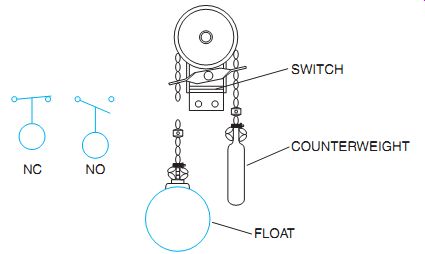
Fgr. 2 Chain-operated float switch with normally closed (NC) and normally
open (NO) wiring symbols.
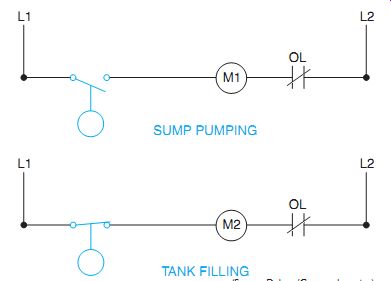
Fgr. 3 Control circuits for a float switch.
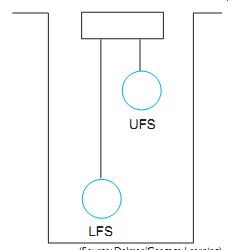
Fgr. 4 Two sump float switches.
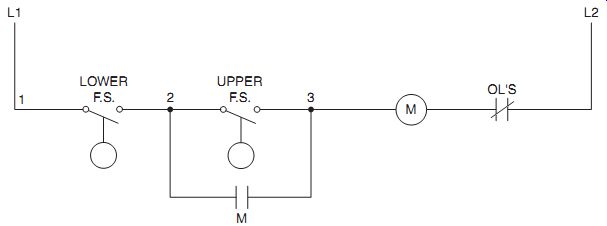
Fgr. 5 Control circuit for two float switches as in Fgr. 4.

Fgr. 6 The electrode or stainless steel probe system.
Electronic methods of control may be used in place of the basic float switch for liquid level control. These methods include electrode sensing, electronic wave transmission and detection, and other combinations.
Fgr. 4 shows a sump pump installation with two float switches. Fgr. 5 is a control circuit of the installed switches. The lower float switch closes due to rising liquid. The sump continues to fill until the upper float causes its switch to close. When it closes, the pump motor starts and closes maintaining contact "M," sealing its circuit. The motor will pump out until the lower float opens the circuit after emptying. This arrangement extends the range of pumping.
An electrode, or stainless steel probe system (Fgr. 6), is similar to Fgr. 5 but conducts a circuit in the liquid instead of using floats. For satisfactory operation, the system must be well grounded.
-------------------
MERCURY BULB FLOAT SWITCH
Another float switch that has become increasing popular is the mercury bulb-type of float switch. This type of float switch does not depend on a float rod or chain to operate. The mercury bulb switch appears to be a rubber bulb connected to a conductor. A set of mercury contacts is located inside the bulb. When the liquid level is below the position of the bulb, it's suspended in a vertical position, Fgr. 7(A).
When the liquid level rises to the position of the bulb, it changes to a horizontal position, Fgr. 7(B).This change of position changes the state of the contacts in the mercury switch.
Because the mercury bulb float switch does not have a differential setting as does the rod- or chain-type of float switch, it's necessary to use more than one mercury bulb float switch to control a pump motor. The differential level of the liquid is determined by suspending mercury bulb switches at different heights in the tank.
Fgr. 8 illustrates the use of four mercury bulb-type switches used to operate two pump motors and provide a high-liquid level alarm.
The control circuit's shown in Fgr. 9.
Float switch FS1 detects the lowest point of liquid level in the tank and is used to turn both pump motors off. Float switch FS2 starts the first pump when the liquid level reaches that height. If pump 1 is unable to control the level of the tank, float switch FS3 will start pump motor 2 if the liquid level should rise to that height. Float switch FS4 operates a warning light and buzzer to warn that the tank is about to overflow. A reset button can be used to turn off the buzzer, but the warning light will remain on until the water level drops below the level of float switch FS4.
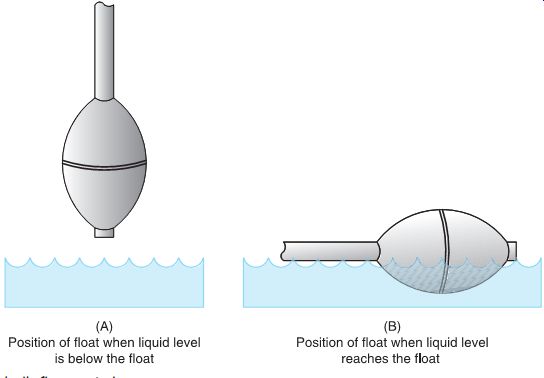
Fgr. 7 Mercury-bulb float switches.
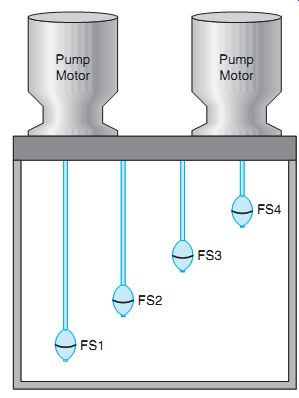
Fgr. 8 Float level is set by the length of the conductor.
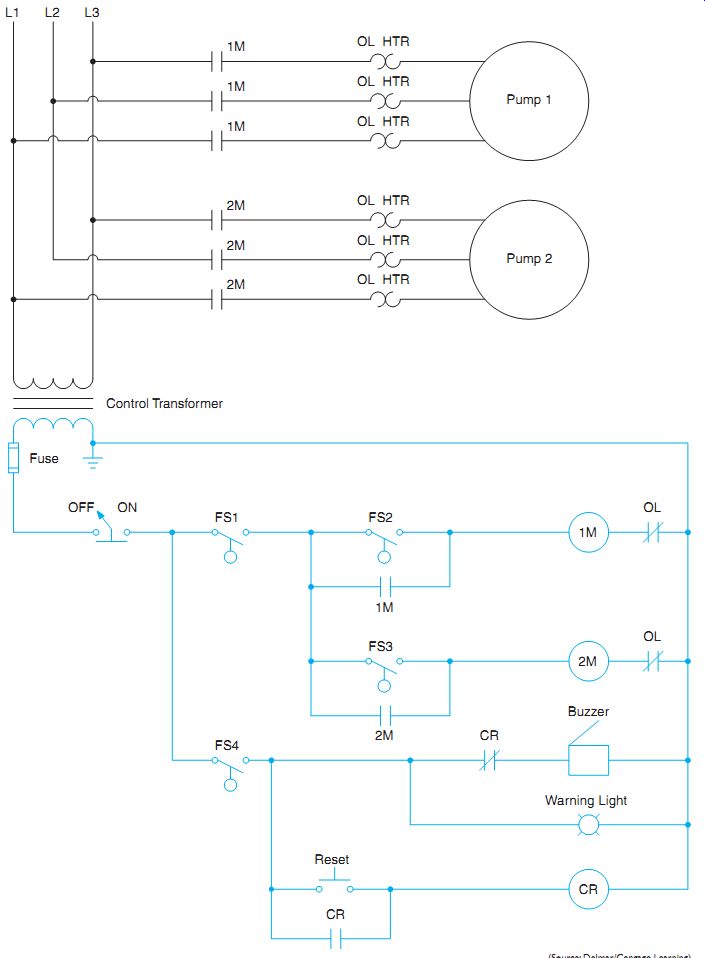
Fgr. 9 Two-pump control with high liquid level warning.
QUIZ:
1. Describe the sequence of operations required to (a) pump sumps and (b) fill tanks.
2. In Fgr. 5, why does the sump pump motor not start when the lower float switch closes?
3. In Fgr. 5, why does the pump not stop while emptying when the upper float switch opens its circuit?
4. Refer to the circuit in Fgr. 9. What is the purpose of control relay CR in this circuit?
5. In Fgr. 9, the reset button is
a. single-acting normally closed
b. single-acting normally open
c. double-acting normally closed
d. double-acting normally open
6. In Fgr. 9, assume that both motors are running. What would be the action of the circuit if the overload contact connected in series with coil 1M should open?
a. Both motors will continue to run.
b. Both motors will stop running.
c. Pump motor 1 will continue to operate and pump motor 2 will stop running.
d. Pump motor 1 will stop running and pump motor 2 will continue to operate.
7. In Fgr. 9, what is the purpose of float switch FS4?